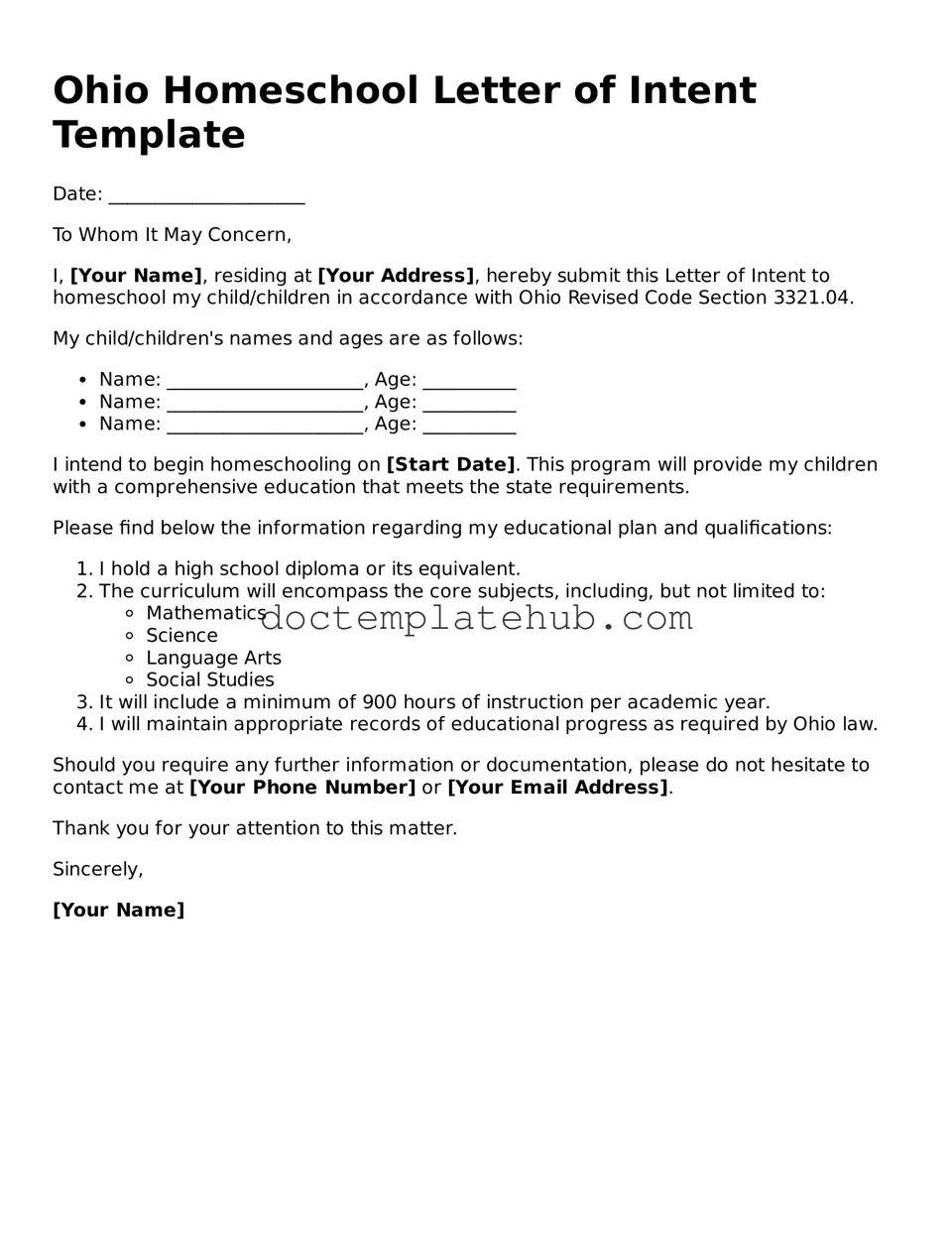What is the Ohio Homeschool Letter of Intent?
The Ohio Homeschool Letter of Intent is a formal document that parents or guardians must submit to the local school district to notify them of their intention to homeschool their children. This letter is a requirement under Ohio law for families who choose to educate their children at home rather than in a traditional school setting.
Who needs to submit the Letter of Intent?
Any parent or guardian who wishes to homeschool their child must submit the Letter of Intent. This applies to children of compulsory school age, which in Ohio is generally between the ages of 6 and 18. If a family has previously enrolled their child in a public or private school, they must also submit this letter upon deciding to transition to homeschooling.
When should the Letter of Intent be submitted?
The Letter of Intent should be submitted to the local school district at least 14 days before the start of the homeschooling program. It is advisable to submit the letter as early as possible to ensure compliance with state regulations and to allow for any necessary discussions with the school district.
What information is required in the Letter of Intent?
The Letter of Intent must include specific information such as the name and address of the child, the name of the parent or guardian, and a statement indicating the intention to homeschool. Additionally, it may be beneficial to include the educational plan or curriculum that will be used, although this is not strictly required at the time of submission.
Is there a specific format for the Letter of Intent?
Ohio does not mandate a specific format for the Letter of Intent. However, it is recommended that the letter be clear and concise, containing all necessary information. Many families choose to use a template or sample letter to ensure they include all required details.
What happens after the Letter of Intent is submitted?
After the Letter of Intent is submitted, the school district may acknowledge receipt of the letter. There is no formal approval process, but the district may contact the family for clarification or additional information. Parents should keep a copy of the submitted letter for their records.
Can the Letter of Intent be revoked or changed?
Yes, parents can revoke or change their Letter of Intent at any time. If a family decides to return their child to a traditional school setting, they should notify the school district of this change. It is also possible to amend the Letter of Intent if there are significant changes in the homeschooling plan or curriculum.
Are there any consequences for not submitting the Letter of Intent?
Failure to submit the Letter of Intent may result in the local school district considering the child truant. This could lead to legal consequences, including potential intervention by the state. It is crucial for families to comply with this requirement to avoid complications.
Where can I find more information about homeschooling in Ohio?
Additional information about homeschooling in Ohio can be found on the Ohio Department of Education's website. This resource provides guidance on the homeschooling process, including requirements, resources, and support for homeschooling families.
Is there a deadline for submitting the Letter of Intent each year?
While there is no specific annual deadline for submitting the Letter of Intent, it is recommended that families submit it at least 14 days before the beginning of each school year. This ensures that the school district is informed and can address any questions or concerns promptly.
